2,4-Pyridinedicarboxylic acid
Synonym(s):2,4-Pyridinedicarboxylic acid;Lutidinic acid
- CAS NO.:499-80-9
- Empirical Formula: C7H5NO4
- Molecular Weight: 167.12
- MDL number: MFCD00006296
- EINECS: 207-892-2
- SAFETY DATA SHEET (SDS)
- Update Date: 2025-12-16 16:15:04
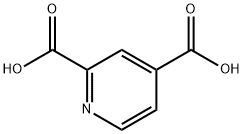
What is 2,4-Pyridinedicarboxylic acid?
Chemical properties
white to almost white crystalline powder
The Uses of 2,4-Pyridinedicarboxylic acid
2,4-Pyridinedicarboxylic acid is an in vitro and in cell inhibitor, as well as a known inhibitor of the histone lysine demethylases. 2,4-Pyridinedicarboxylic acid has been used in a study to determine that ruthenium(II) complexes exert antimetastatic effects on several tumor cell lines in vitro, achieved mostly by the effect on cell adhesion, migration and angiogenesis. 2,4-Pyridinedicarboxylic acid has been used in a study to develop an assay that represents the first report of a RapidFire mass spectrometery assay for an epigenetics target.
The Uses of 2,4-Pyridinedicarboxylic acid
2,4-Pyridinedicarboxylic Acid is a jumonji C (JmjC) histone demethylase inhibitor.
What are the applications of Application
Pyridine-2,4-dicarboxylic acid is an inhibitor of the histone lysine demethylases
Definition
ChEBI: A pyridinedicarboxylic acid carrying carboxy groups at positions 2 and 4.
Flammability and Explosibility
Not classified
Biological Activity
2,4-pyridinedicarboxylic acid (2,4-pdca) is an inhibitor of histone lysine-specific demethylases that targets on jmjd2a (kdm4a), kdm4c, kdm4e (ic50, 1.4 μm), kdm5b (ic50, 3 μm), kdm6a and other 2-oxogynases [1][2].histone lysine-specific demethylases jmjd2a (kdm4a) and kdm4c are both members of the jumonji domain 2 (jmjd2) family and function as trimethylation-specific demethylases, converting specific trimethylated histone residues to the dimethylated form. kdm5b is an h3k4me3⁄ me2-specific lysine demethylase [1][2].2,4-pyridinedicarboxylic acid (2,4-pdca) is an inhibitor of jmjd2a (kdm4a), kdm4c and kdm5b. in the fdh-coupled assay, 2,4-pdca inhibited cckdm5b with ic50 value of 3 ± 1 μm. in maldi-tof analysis of h3(1-21)k4me3, 2,4-pdca reduced the level of h3(1-15) induced by cckdm5b. in u2-os cells transfected with kdm5b, 2,4-pdca inhibited the decrease of h3k4me3 [1]. in hg-treated vsmcs, 2,4-pdca (1.0 mm) inhibited jmjd2a and hg-induced proliferation in a concentration-dependent way, and inhibited hg-induced migration. 2,4-pdca also reduced the mrna and protein levels of mcp-1 and il-6 [2].in diabetic rats, 2,4-pdca (7.5 mg/kg/d) reduced neointimal area and i/m ratio in the injured arteries 28 days after injury. 2,4-pdca also inhibited the percentage of pcna-positive cells in the neointima [2].
References
[1]. kristensen lh, nielsen al, helgstrand c, et al. studies of h3k4me3 demethylation by kdm5b/jarid1b/plu1 reveals strong substrate recognition in vitro and identifies 2,4-pyridine-dicarboxylic acid as an in vitro and in cell inhibitor. febs j, 2012, 279(11): 1905-1914.
[2]. qi h, jing z, xiaolin w, et al. histone demethylase jmjd2a inhibition attenuates neointimal hyperplasia in the carotid arteries of balloon-injured diabetic rats via transcriptional silencing: inflammatory gene expression in vascular smooth muscle cells. cell physiol biochem, 2015, 37(2): 719-734.
Properties of 2,4-Pyridinedicarboxylic acid
| Melting point: | 243-246 °C |
| Boiling point: | 295.67°C (rough estimate) |
| Density | 1.5216 (rough estimate) |
| vapor pressure | 0.001Pa at 25℃ |
| refractive index | 1.6280 (estimate) |
| storage temp. | Store below +30°C. |
| solubility | 2.49g/l |
| form | Crystalline Powder |
| pka | 2.15(at 25℃) |
| color | White to almost white |
| Water Solubility | Soluble in water at 20°C 4.5 g/L. |
| λmax | 258nm(MeOH aq.)(lit.) |
| BRN | 131631 |
| CAS DataBase Reference | 499-80-9(CAS DataBase Reference) |
| EPA Substance Registry System | 2,4-Pyridinedicarboxylic acid (499-80-9) |
Safety information for 2,4-Pyridinedicarboxylic acid
| Signal word | Warning |
| Pictogram(s) |
 Exclamation Mark Irritant GHS07 |
| GHS Hazard Statements |
H315:Skin corrosion/irritation H319:Serious eye damage/eye irritation H335:Specific target organ toxicity, single exposure;Respiratory tract irritation |
| Precautionary Statement Codes |
P261:Avoid breathing dust/fume/gas/mist/vapours/spray. P304+P340:IF INHALED: Remove victim to fresh air and Keep at rest in a position comfortable for breathing. P305+P351+P338:IF IN EYES: Rinse cautiously with water for several minutes. Remove contact lenses, if present and easy to do. Continuerinsing. P405:Store locked up. |
Computed Descriptors for 2,4-Pyridinedicarboxylic acid
2,4-Pyridinedicarboxylic acid manufacturer
JSK Chemicals
New Products
Indole Methyl Resin tert-butyl 9-methoxy-3-azaspiro[5.5]undecane-3-carboxylate Boc-His(Boc)-OH 2-CTC Resin 4-Chloro-7-tosy1-7Hpyrrolo[2,3-d]pyrimidine 5,7-Dibromo-1H-indole 2,5-dichloro-N-hydroxy-4,6-dimethylpyridine-3-carboximidamide 2,2-Dimethoxy-7-azaspiro[3.5]nonane hydrochloride 4-chloromethyl-5-methyl-1,3-dioxol-2-one (DMDO-Cl) R-2-BENZYLOXY PROPIONIC ACID 1,1’-CARBONYLDIIMIDAZOLE 1,1’-CARBONYLDI (1,2-4 TRIAZOLE) N-METHYL INDAZOLE-3-CARBOXYLIC ACID 4-((2-hydroxyethyl)thio)benzoic acid 1-(TERT-BUTOXYCARBONYL)-2-PYRROLIDINONE Methyl 6-methylnicotinate 3-Pyridineacrylic acid tert-Butyl carbazate TETRAHYDRO-2H-PYRAN-3-OL 2-((4-morpholinophenylamino) (methylthio) methylene) malononitrile 3-(4-morpholinophenylamino)-5-amino-1H-pyrazole-4-carbonitrile 2,4-dihydroxybenzaldehyde 1,3-Diethyl-1,3-Diphenylurea Methyl 2-methylquinoline-6-carboxylateRelated products of tetrahydrofuran
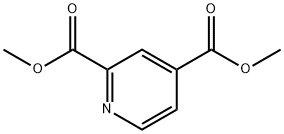
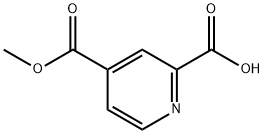
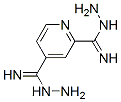
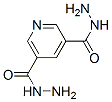
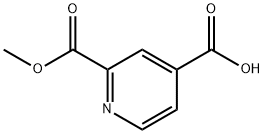
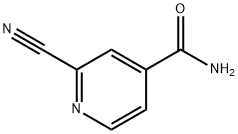
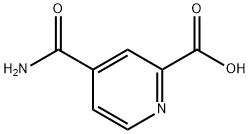
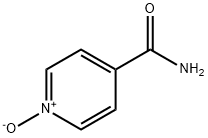
You may like
-
 499-80-9 2,4-PYRIDINEDICARBOXYLIC ACID Lutidinic acid 98%View Details
499-80-9 2,4-PYRIDINEDICARBOXYLIC ACID Lutidinic acid 98%View Details
499-80-9 -
 2,4-Pyridinedicarboxylic acid 499-80-9 99%View Details
2,4-Pyridinedicarboxylic acid 499-80-9 99%View Details
499-80-9 -
 PYRIDINE-2,4-DI CARBOXYLIC ACID 499-80-9 99%View Details
PYRIDINE-2,4-DI CARBOXYLIC ACID 499-80-9 99%View Details
499-80-9 -
 499-80-9 2,4-Pyridinedicarboxylic acid, 98% 99%View Details
499-80-9 2,4-Pyridinedicarboxylic acid, 98% 99%View Details
499-80-9 -
 2, 4-Pyridinedicarboxylic acid hydrate, 99+% CAS 499-80-9View Details
2, 4-Pyridinedicarboxylic acid hydrate, 99+% CAS 499-80-9View Details
499-80-9 -
 2,4-Pyridinedicarboxylic Acid CAS 499-80-9View Details
2,4-Pyridinedicarboxylic Acid CAS 499-80-9View Details
499-80-9 -
 2,4-Pyridinedicarboxylic acid, 98% CAS 499-80-9View Details
2,4-Pyridinedicarboxylic acid, 98% CAS 499-80-9View Details
499-80-9 -
 2,4-Pyridinedicarboxylic acid CAS 499-80-9View Details
2,4-Pyridinedicarboxylic acid CAS 499-80-9View Details
499-80-9
